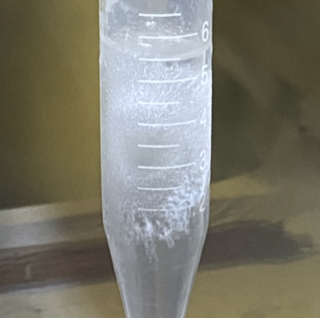PFC may refer to:
PFC may refer to:
EPA most commonly refers to the United States Environmental Protection Agency.

Fluorocarbons are chemical compounds with carbon-fluorine bonds. Compounds that contain many C-F bonds often have distinctive properties, e.g., enhanced stability, volatility, and hydrophobicity. Several fluorocarbons and their derivatives are commercial polymers, refrigerants, drugs, and anesthetics.
APC most often refers to:
MSP often refers to:
AFC may stand for:

Halomethane compounds are derivatives of methane with one or more of the hydrogen atoms replaced with halogen atoms. Halomethanes are both naturally occurring, especially in marine environments, and human-made, most notably as refrigerants, solvents, propellants, and fumigants. Many, including the chlorofluorocarbons, have attracted wide attention because they become active when exposed to ultraviolet light found at high altitudes and destroy the Earth's protective ozone layer.
BFC may refer to:
TPP may refer to:
PMF may stand for:

Tetrafluoromethane, also known as carbon tetrafluoride or R-14, is the simplest perfluorocarbon (CF4). As its IUPAC name indicates, tetrafluoromethane is the perfluorinated counterpart to the hydrocarbon methane. It can also be classified as a haloalkane or halomethane. Tetrafluoromethane is a useful refrigerant but also a potent greenhouse gas. It has a very high bond strength due to the nature of the carbon–fluorine bond.

Nitrogen trifluoride is an inorganic, colorless, non-flammable, toxic gas with a slightly musty odor. It finds increasing use within the manufacturing of flat-panel displays, photovoltaics, LEDs and other microelectronics. Nitrogen trifluoride is also an extremely strong and long-lived greenhouse gas. Its atmospheric burden exceeded 2 parts per trillion during 2019 and has doubled every five years since the late 20th century.
Organofluorine chemistry describes the chemistry of organofluorine compounds, organic compounds that contain a carbon–fluorine bond. Organofluorine compounds find diverse applications ranging from oil and water repellents to pharmaceuticals, refrigerants, and reagents in catalysis. In addition to these applications, some organofluorine compounds are pollutants because of their contributions to ozone depletion, global warming, bioaccumulation, and toxicity. The area of organofluorine chemistry often requires special techniques associated with the handling of fluorinating agents.

Perfluoro tert-butylcyclohexane is a perfluorinated chemical compound. It is a component of the empirical therapeutic oxygen carrier called Oxycyte.
The Fowler process is an industry and laboratory route to fluorocarbons, by fluorinating hydrocarbons or their partially fluorinated derivatives in the vapor phase over cobalt(III) fluoride.

Fluorine is a chemical element; it has symbol F and atomic number 9. It is the lightest halogen and exists at standard conditions as a highly toxic, pale yellow diatomic gas. Fluorine is extremely reactive, as it reacts with all other elements except for the light inert gases.
Global Infrastructure Partners (GIP) is an infrastructure investment fund making equity and selected debt investments. GIP's main headquarters are located in New York City and its equity investments are based on infrastructure assets in the energy, transport and water & waste sectors. GIP employs approximately 150 investment and operational professionals and has offices in New York, London, Stamford, Sydney, Melbourne, Brisbane, Mumbai, Delhi, Singapore and Hong Kong. In total as of 2023, its portfolio companies employ approximately 100,000 people, according to the company website.
Fluorinated gases (F-gases) are a group of gases containing fluorine. They are divided into several types, the main of those are hydrofluorocarbons (HFCs), perfluorocarbons (PFCs), sulphur hexafluoride (SF6). They are used in refrigeration, air conditioning, heat pumps, fire suppression, electronics, aerospace, magnesium industry, foam and high voltage switchgear. As they are greenhouse gases with a strong global warming potential, their use is regulated.
Fluorine forms a great variety of chemical compounds, within which it always adopts an oxidation state of −1. With other atoms, fluorine forms either polar covalent bonds or ionic bonds. Most frequently, covalent bonds involving fluorine atoms are single bonds, although at least two examples of a higher order bond exist. Fluoride may act as a bridging ligand between two metals in some complex molecules. Molecules containing fluorine may also exhibit hydrogen bonding. Fluorine's chemistry includes inorganic compounds formed with hydrogen, metals, nonmetals, and even noble gases; as well as a diverse set of organic compounds. For many elements the highest known oxidation state can be achieved in a fluoride. For some elements this is achieved exclusively in a fluoride, for others exclusively in an oxide; and for still others the highest oxidation states of oxides and fluorides are always equal.

Fluorine may interact with biological systems in the form of fluorine-containing compounds. Though elemental fluorine (F2) is very rare in everyday life, fluorine-containing compounds such as fluorite occur naturally as minerals. Naturally occurring organofluorine compounds are extremely rare. Man-made fluoride compounds are common and are used in medicines, pesticides, and materials. Twenty percent of all commercialized pharmaceuticals contain fluorine, including Lipitor and Prozac. In many contexts, fluorine-containing compounds are harmless or even beneficial to living organisms; in others, they are toxic.
Prospect Fighting Championships or PFC is a Canadian combat sports promotion based in London, Ontario, Canada. Established in 2013, it is the oldest active promotion in the province. It was formerly known as the Provincial Fighting Championship before rebranding in 2015. The PFC is one of the largest MMA promotions in Canada, thus it provides talent to the UFC as a feeder organization. In 2023, the promotion signed a deal with Fite TV to stream events on their broadcast service.